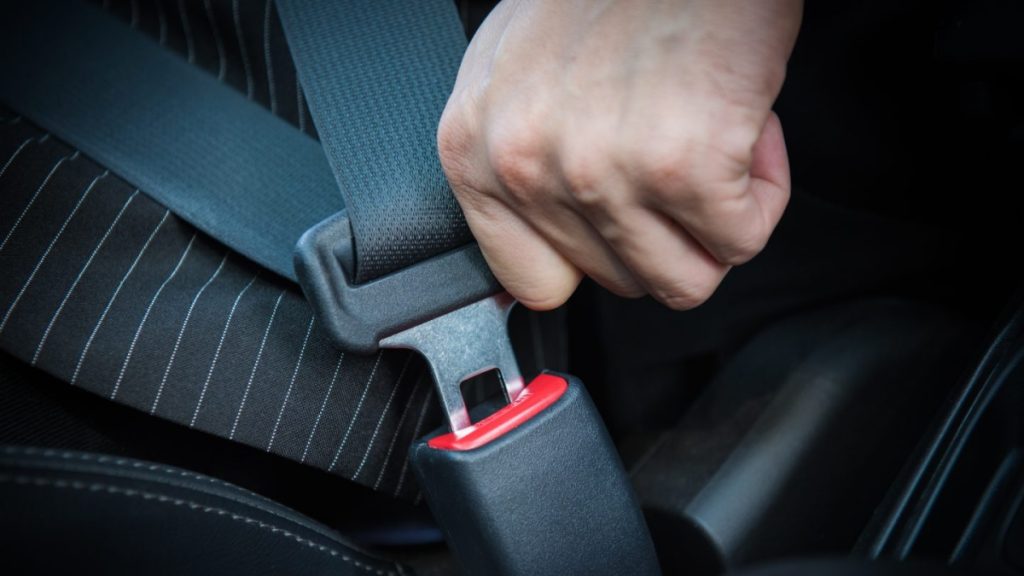Seat belts are ubiquitous safety devices, the purpose of which nearly everyone knows is to save lives by preventing serious and fatal injuries. Except for the state of New Hampshire, every state and the District of Columbia require front-seat occupants to wear seat belts. Thirty-three states and Washington, D.C. also mandate that rear-seat passengers wear seat belts. Special rules apply to seat belts for young children.
However, not everyone appreciates how essential these devices are to driver and passenger safety. And even though seat belts do protect vehicle occupants in the event of an accident, they can fail. Text Kevin Accident Attorneys examine why it’s so important for everyone to buckle up.
The Science Behind Seat Belt Safety
Seat belts consist primarily of two devices: a shoulder belt and a lap belt. In the event of an accident, someone not wearing a seat belt could easily be ejected from their seat. They could then crash into the interior of the vehicle or even be ejected through the windshield. Either result could prove seriously harmful if not fatal. The seat belt, when worn properly, is designed to prevent these occurrences.
Consider what actually happens during a crash. The automobile itself may suddenly come to a stop as it collides with another vehicle or object. Someone who is not wearing a seat belt will continue to move at the same speed at which the vehicle was previously traveling. They will continue on this trajectory until they catch up with, and crash into, whatever has stopped the vehicle. Belts slow down the occupants so they don’t continue moving forward and suffering major injuries.
Besides preventing ejection from the seat, the seat belt also spreads the force of the crash across such areas as the shoulder, rib cage, and pelvis. It is no accident that the crash force is dispersed in these areas, as these are relatively strong, bony parts of the body. Notably, a crash victim can still suffer some injury from the belt itself, such as bruising or even vertebral fractures. These injuries become more likely with a high-speed crash.
But these injuries are preferable compared to the more catastrophic injuries suffered by those who don’t wear seat belts. According to the National Highway Traffic Safety Administration (NHTSA), occupants who are ejected from a vehicle in non-rollover crashes are nearly twice as likely to die. Meanwhile, those who are ejected in rollover crashes are four times more likely to die. Also, unbelted occupants can injure other people inside the vehicle. For instance, a front-seat passenger can be hurt by an unbelted back-seat passenger.
Can Seat Belts Fail?
For all the good that seat belts do, they are not perfect. Although seat belts are thought to be one of the most well-functioning devices in a vehicle, they fail more commonly than most people realize. The NHTSA reports that approximately 3 million injuries and 40,000 deaths occur each year due to seat belt failures. Common reasons that belts fail include:
- False latching (the user believing incorrectly that the belt is buckled)
- The latch doesn’t work correctly and the belt unbuckles
- The retractor device fails and doesn’t “catch” the victim, meaning he or she lurches forward
- Poor seat belt design
- Poor or defective materials used to make the seat belt
Although seat belt failure can sometimes be attributed to user error, these devices are relatively simple and most adults understand how to wear them. Therefore, it is more likely that one of the above causes would result in seat belt failure.
What To Do If A Seat Belt Fails
If a seat belt doesn’t prevent you or a loved one from being hurt in an accident, then you will likely have a personal injury claim against the driver or other party that caused the wreck (in the event of a fatality, you may have a wrongful death claim). You may also have claims against third parties like the automobile or seat belt manufacturer. Remember, even if the belt does work, you could suffer non-fatal but still substantial injuries like vertebral fracture. These could result in medical bills, lost time from work, pain and suffering, and other damages.
An experienced attorney will review the details of the crash, determine who may be at fault, and then get to work seeking the damages you deserve. To learn more about seat belt laws in California, read our blog article on the topic. If you’ve been injured in a car wreck in California, give us a call to discuss your legal rights.
Laila Azzahra is a professional writer and blogger that loves to write about technology, business, entertainment, science, and health.
